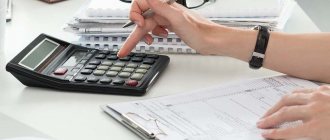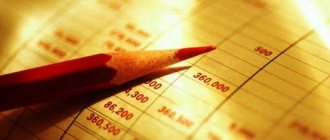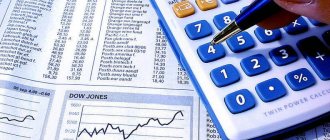The useful life is usually understood as the period of time during which the use of an OS object allows you to generate income or realize the goals of the enterprise. It is established by the enterprise before the object is accepted for accounting.
If it cannot be determined based on the available data, the indicator is calculated based on the expected period of use, physical wear and tear, or other restrictions. What does this indicator represent?
Table of fixed assets
The summary table presents the classification areas of OS in accordance with their types.
| OS group name | Code designation | Structural composition |
| Structures other than residential buildings | 110000000 | Buildings of workshops, factories, individual workshops, garages, warehouses, including communication rooms |
| Other buildings | 120000000 | Wells, overpasses, bridges, highways, sewerage installations, mines |
| Residential buildings | 130000000 | Houses, premises intended for housing, historical monuments that relate to them |
| Machines, equipment | 140000000 | Energy equipment, in particular reactors, engines that produce or convert energy |
| Transport units | 150000000 | Means used to move people and transport goods (cars, buses, ships, planes, trains) |
| Inventory | 160000000 | Drills, vibrators, hammers and other tools, containers, containers |
| Cattle | 170000000 | Horses, camels, oxen, sheep, cows |
| Plantings that have been around for many years | 180000000 | Trees, shrubs, hedges made of living plants, decorative areas with landscaping |
| Fixed assets of material significance that are not included in the main groups | 190000000 | Library funds, land improvement expenses, etc. |
This classification is the basis for further analytical accounting.
Concept and composition of fixed assets
The fixed assets of an enterprise include assets that have a material expression and strictly meet the criteria established by law, which we will discuss in more detail in the next section of the article.
Such assets include buildings, structures, machinery, equipment, instruments intended for measurements and adjustments, computers, transport, tools, equipment, road infrastructure, as well as other types of assets.
In agricultural organizations, fixed assets include breeding and draft animals and perennial plants.
It is possible to include land plots, capital investments for their improvement (for example, reclamation or irrigation work), as well as natural resources such as water, subsoil, etc.
IMPORTANT! Objects of tangible assets do not belong to fixed assets if they are located in the warehouses of trading or manufacturing enterprises that manufacture them. In this case, they are accounted for as goods held for sale or as finished goods.
For accounting purposes, the accounting policies (hereinafter referred to as AP) of organizations may provide for a cost limit, below which assets that meet the criteria for recognition as fixed assets in accounting can be classified as inventories. In this case, the specified limit should not exceed 40,000 rubles. (paragraph 4, clause 5 of the Regulations on OS accounting (PBU 6/01)).
IMPORTANT! Fixed assets, the use of which is limited to leasing, are recognized in accounting and reporting as profitable investments in material assets.
As a general rule, capital investments do not belong to the fixed assets of an enterprise (clause 3 of PBU 6/01). Capital investments in leased fixed assets can be included in their composition (paragraph 2, paragraph 5 of PBU 6/01).
Depreciation groups and classifier
Since 2020, a classification has come into effect, which was approved within the framework of Decree of the Government of the Russian Federation No. 1 of January 1, 2002. According to its standards, all fixed assets are divided into depreciation groups, the number of which is 10 . They are discussed in detail in the table.
| Depreciation group number | Useful life of fixed assets, terms are indicated inclusive | Example in practice |
| 1 | 1-2 years | Machines, complex mechanisms and pieces of equipment |
| 2 | 2-3 years | Pumps used for pumping liquid substances |
| 3 | 3-5 years | Radio-electronic mechanisms designed to provide communication |
| 4 | 5-7 years | Fences and fences made of reinforced concrete material |
| 5 | 7-10 years | Structures directly related to the forest industry |
| 6 | 10-15 years | Water wells |
| 7 | 15-20 years | Sewage and treatment plants |
| 8 | 20-25 years | Main wires |
| 9 | 25-30 years | Structures, excluding residential buildings |
| 10 | From 30 years old | Residential buildings |
To determine the depreciation group to which certain fixed assets belong, you must use the classifier . If there is no data in it, the specialist has the right to set the period independently, based on data on the service life specified in the technical documentation or the manufacturer’s recommendations.
Along with this, other OS classification criteria are applied. For example, according to the degree of exploitation in the enterprise's activities, funds are allocated in use, reserve, repair, and completion.
According to the ownership of the owner, they can be their own, leased, received for operational / trust management. Depending on their functional purpose, they may belong to the production and non-production groups. Based on their participation in the production process, they can be considered active and passive.
Latest groups
- From 15 to 20 years, such fixed assets as wooden, container, frame and panel, wood-metal, adobe, adobe, frame-cladding and panel, adobe and other similar buildings, excluding residential ones, are used. As well as expressways, railway, pedestrian, road and combined bridges, packaging and strapping machines, non-self-propelled sea vessels, power trains and others. This is the seventh group of the classifier.
- The next category has a useful life of 20 to 25 years. Collectors intended for laying pipes, blast furnaces, railway tracks operated for non-public use, piers, power wires and cables, river cargo-passenger ships and some others - all this belongs to the eighth type.
- The penultimate, ninth group combines fixed assets whose useful life exceeds twenty-five years, but does not go beyond thirty. Here are collected buildings such as fruit and vegetable storage facilities with stone walls, reinforced concrete columns, coverings, coastal fortifications, marine fire vessels, nuclear reactors, water treatment facilities, covered wagons for highways, wagons and tanks for oil and gasoline, etc. d.
- Fixed assets of the latter group have brought economic benefits to the organization for more than thirty years. These primarily include housing, escalators, floating sea docks, subway cars, forest shelterbelts and many other means of labor.
The procedure for determining the useful life
The bottom bar of absolutely any shock-absorbing group begins with the word “above.” The upper part, in turn, ends with the phrase “inclusive.” This indicates that for the third group this period is 3 years and + 1 month, i.e. a total of 37 months .
Using depreciation groups you can find out the SPI. For example, the fifth group includes objects for which this indicator ranges from 7 to 10 years inclusive. It is worth noting that within this interval, the taxpayer determines the service life of each object independently.
Legislative regulation of this aspect plays an important role. In paragraph 1 of Art. 258 of the Tax Code of the Russian Federation states that the taxpayer determines the period independently. He begins accounting from the beginning of the commissioning of the facility, in accordance with the provisions of this legislative norm, as well as taking into account the principles of classification.
Why determine SPI
Useful lives are established for adequate accounting purposes. But in accounting and tax accounting, the features of their establishment are different, since the goals are different:
- SPI for accounting. It is necessary in order to correctly determine the decrease in the value of a fixed asset and correctly calculate depreciation on it. PBU 6/01 in paragraph 20 says that the organization can set this period at its discretion, taking into account the following key parameters:
- how long it is planned to actively use the building or structure;
- what factors influence physical wear and tear in this particular case;
- what degree of wear is acceptable;
- Are there any special restrictions for a specific property (for example, staying in a rental, leasing, etc.).
- SPI for tax accounting . It is established to classify fixed assets according to the time of their useful operation (clause 1 of Article 258 of the Tax Code of the Russian Federation). For this purpose, all fixed assets are divided into groups, the composition of which is fixed in the classification table. This document was approved by the Government of Russia in Resolution No. 1 of January 1, 2002. The table shows codes according to the classifier adopted for fixed assets (OKOF) and the distribution of fixed assets by groups. For each group, a time range is established within which the SPI can be assigned for each asset (including “long-term” ones, such as buildings and structures).
This is important to know: Tax on outbuildings in 2020
NOTE! When maintaining accounting records, it is convenient to use the Tax Classification to determine the SPI of real estate: in this case, the calculations will be the same, that is, depreciation deductions will be calculated at a minimum. But it is also possible to set a smaller SPI in accounting.
The method for determining SPI must be recorded in the accounting policies of the organization.
Classifier in accounting
In accounting, the parameter is determined in accordance with the expected period of operation and depreciation. If an organization has established this indicator independently, it may not rely on the classifier standards. As a result, this value in accounting and tax accounting may be different.
As for intangible assets, their life is revealed at the moment when they are accepted for accounting. The establishment of the IPI takes place taking into account the following parameters :
- The period of validity of rights to the result of intellectual activity or an individualized means.
- The expected life of an asset during which economic benefits are expected to be derived from it.
Period of use of objects in tax accounting
In this case, the organization takes into account the norms of the Tax Code of the Russian Federation and the classifier developed at the legislative level, which is approved by the Government. The countdown begins from the moment the facility is put into operation.
The indicator is determined by the taxpayer independently at the time the facility is put into operation. If desired and necessary, he can increase this period by increasing it after reconstruction/modernization, which is prescribed in Art. 258 of the Tax Code of the Russian Federation.
What is bonus depreciation
Each organization has the right to apply the so-called depreciation premium to all fixed assets, except those received free of charge. The bonus allows you to immediately write off part of the money spent on the purchase or construction of an object as current expenses. The maximum premium amount is determined as a percentage of the original cost and depends on the depreciation group (we will discuss these groups in detail below). For fixed assets belonging to the third to seventh depreciation groups, the premium cannot exceed 30%, for all other groups - 10%.
Also, a depreciation bonus can be applied to the costs of completion, additional equipment, reconstruction, modernization, technical re-equipment and partial liquidation. The maximum size here is determined in the same way as in the case of the acquisition or construction of a fixed asset.
If, before the expiration of five years from the date of commissioning, the company sells the fixed asset to a related party, the depreciation bonus must be restored, that is, included in taxable income. In this case, the financial result from the sale should be reduced by the amount of the depreciation bonus. In a situation where an object is sold to a person who is not interdependent, the depreciation bonus is not restored and does not reduce the financial result.
We would like to add that the use of bonus depreciation can be waived. In this case, all costs associated with the fixed asset will be included in its initial cost.
In accounting, bonus depreciation is not provided.
Get a sample accounting policy for a small LLC Get it for free
Changes and revisions of the SPI during operation of the OS
As already noted, an enterprise has the right to increase SPI if, in the course of changes occurring in relation to a fixed asset, its term has changed upward.
With all this, the establishment of a new period occurs within the periods that are established for the depreciation group that initially included this fixed asset. Due to modernization, the OS cannot be included in another group.
The change in useful life of fixed assets is presented in the video below.
https://youtu.be/u1EO-pKwRFk
Depreciation calculation: basic provisions
Question: An organization purchased non-residential premises for an office on the first floor of a panel residential apartment building. To which depreciation group can this non-residential premises be classified for the purpose of calculating income tax? Answer: An office non-residential premises acquired by an organization, located on the ground floor of a panel residential apartment building, for the purposes of determining the useful life and calculating income tax, in our opinion, from January 1. Rationale: In tax accounting according to paragraph. The useful life is recognized the period during which an object of fixed assets serves to fulfill the goals of the taxpayer’s activities. The useful life is determined by the taxpayer independently on the date of commissioning of the depreciable property in accordance with the provisions of Art. The list of property that belongs to fixed assets is established by OKOF. Until January 1
We draw your attention to the Letter of the Ministry of Finance of Russia dated April 21. In it, employees of the financial department expressed the opinion that depreciation accrued on depreciable property not used by the taxpayer in activities aimed at generating income does not reduce the income received when calculating the tax base for corporate income tax. That is, if the apartment purchased by the organization is not occupied by seconded employees for some periods, then there is a high probability that the organization will not be able to take into account expenses in the form of accrued depreciation for these periods for profit tax purposes. The new procedure for writing off the value of fixed assets can only be applied to those objects that were acquired after January 1.
SPI when purchasing a used fixed asset
If a company calculates depreciation using the straight-line method, during the acquisition of an operating system that was in use, it can set this indicator based on the classifier, reducing its value by the number of years/months during which it was used by the previous owner.
Another option is to take the figure that was used by the previous owner and reduce it by the number of years/months that the property was used by the new owner. If the result is a zero or negative period, the company will be able to set it taking into account safety requirements and other aspects.
Documenting
Each operation performed at the enterprise is accompanied by documentation. To include objects in the OS and take into account the fact of their commissioning, the following documents :
- the act related to the acceptance and transfer of an asset, with the exception of buildings and structures, is filled out according to form No. OS-1;
- act on acceptance and transfer of buildings/structures (No. OS-1a);
- document on internal movement of fixed assets (form No. OS-2);
- repair (No. OS-3);
- inventory card (No. OS-6);
- write-off act (No. OS-4, 4a, 4b);
- accounting of equipment and its transfer (No. OS-14 and No. OS-15, respectively); if there are defects, form No. 16 is used.
These are the basic forms used in practice most often, depending on the operations performed with fixed assets.
How to find out the depreciation rate for a non-residential building
Please enable JavaScript for a better site experience. Many enterprises have buildings and structures on their balance sheets, for which depreciation charges are calculated. According to it, buildings and structures belong to groups for which the maximum useful life is set at and over 30 years, respectively. Regardless of the commissioning period, to calculate depreciation for buildings and structures, use the linear accrual method, in which the cost of a fixed asset decreases evenly over the entire period of use. Accrue depreciation on the building in accordance with the depreciation rate that is determined for this object, taking into account its useful life.
They are close to those for accounting, but still different. The useful life is the period during which an item of fixed assets or an item of intangible assets serves to fulfill the goals of the taxpayer's activities. The useful life is determined by the taxpayer independently on the date of commissioning of this depreciable property item.
Tip 1: How to calculate depreciation on a building
An indispensable real estate assistant. Rubric question - answer related to real estate. The organization acquired the following real estate assets under a purchase and sale agreement for the amount of 2 rubles: a warehouse with a total area of 7 sq. m. When transferring property, the cost of each individual inventory item will be specified by the seller.
This is important to know: Validity period for apartment assessment
WATCH THE VIDEO ON THE TOPIC: Depreciation by the sum of numbers of years - Calculation of depreciation using an example - Accounting - Methods of depreciation of fixed assets
In the classification of fixed assets included in depreciation groups, code Non-residential buildings can include objects such as warehouses, garages and industrial buildings, commercial retail buildings, buildings for entertainment events, hotels, restaurants, schools, hospitals, prisons, etc. Prison premises , colonies, pre-trial detention centers, barracks for prisoners, barracks for military personnel, dormitories of correctional and educational colonies, medical correctional institutions, schools and hospitals are considered as non-residential buildings, despite the fact that they may serve as a place of residence. The object of classification of this type of fixed assets is each individual building. If buildings are adjacent to each other and have a common wall, but each of them is an independent structural unit, they are considered separate objects. External extensions to the building that have independent economic significance, separate boiler house buildings, as well as outbuildings, warehouses, garages, fences, sheds, fences, wells, etc., are independent objects.
Examples of defining a deadline
The period is determined based on the depreciation group to which the object is related.
Laptop and computer
The devices belong to the 3rd group, accordingly they can be used usefully for 3-5 years.
Office furniture
In paragraph 1 of Art. 258 of the Tax Code of the Russian Federation, there is no office furniture. Previously, it was related to the 4th group, for which the useful life exceeded 5-7 years inclusive. If the organization has no other data, it can classify these structures specifically as group 4.
Machines and equipment
They belong to group 1 and are used for 1-2 years inclusive.
Truck and car
Most vehicles belong to the 3rd, 4th and 5th depreciation groups depending on their characteristics. The 3rd group usually includes vehicles with a carrying capacity of up to 3.5 tons. To the 4th - tractors. By the 5th – up to 12 tons.
Refrigerator and TV
These objects belong to the 3rd depreciation category, respectively, the SPI ranges from three to five years.







